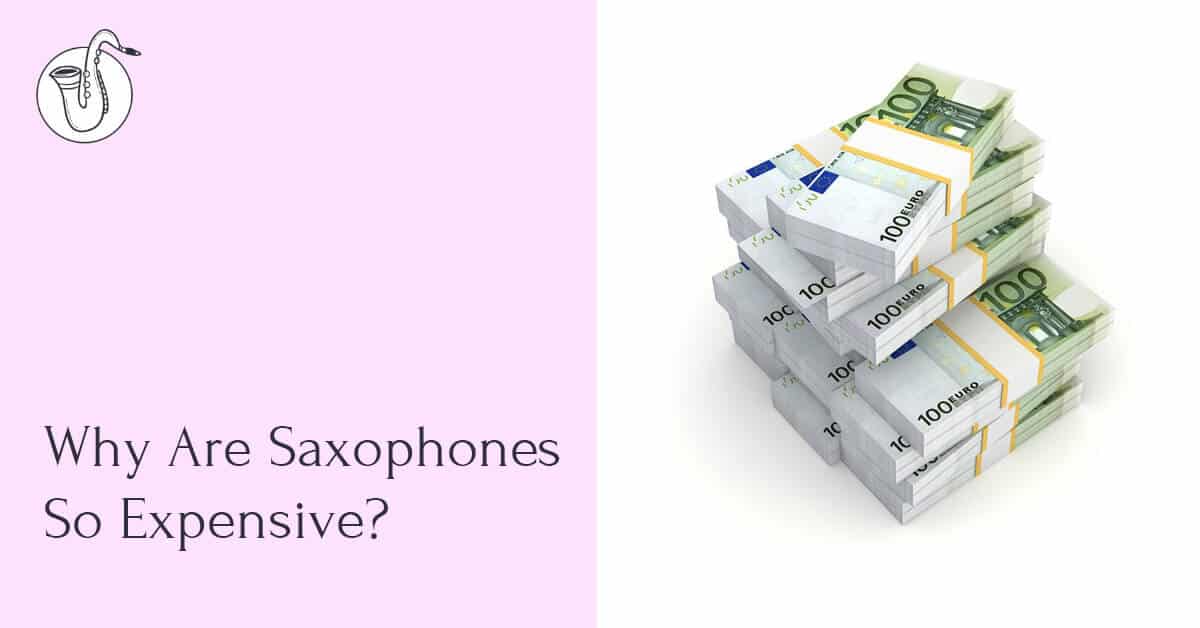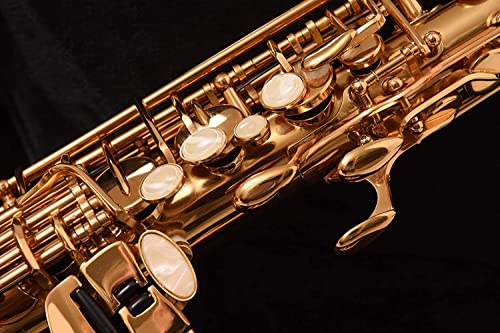It’s no secret that when you’re starting to learn something new, sometimes you’re not even aware of what you should be expecting. And that’s why, when you’re on the internet, browsing forums and articles to find the best saxophone, you’ll be discouraged by the price tags you’ll find.
However, this shouldn’t be the case. The people that write these recommendations are probably well-seasoned players, some of whom, like me, have started out with rather cheap student horns for band practice.
So, it’s wise to remind yourself that, like pretty much all the tools, instruments, gadgets, devices, and anything in between, you’ll always find units that are on the more expensive end of the spectrum, but you’ll also find very affordable ones -especially if you buy them used.
Table of Contents
So, Why Are Saxophones So Expensive?
The best saxophones on the market are manufactured by Selmer Paris, Yamaha, and Yanagisawa. And, as a matter of fact, they’re quite more expensive than other options like the ones you’ll find on eBay or Amazon.
This seems quite natural when you take into consideration the decades and even centuries -in the case of Selmer Paris- of experience that these companies have with manufacturing instruments, especially saxophones.
With any of these brands, you’ll be sure to get a high-quality instrument that will hold their value, which means that you can get at least half of your money back if you decide to resell it, if not even more than that.
Apart from the physical durability of the instrument and intricacy of the design, the sound quality is superb and allows professionals to reach their peak performance, while enabling beginners to stay in tune and progress much faster.
The Difference Between Cheap and Expensive Saxophones
Now, let’s delve into the differences between a cheap and expensive saxophone down to the smallest detail.
1- Price
The first and obvious difference is in the price. The high-end horns, like original Selmer Paris ones, can reach up to 30 thousand dollars, when they’re gold or silver-plated.
Of course, you can find high-end, professional horns that are a lot more affordable than that, but an average price for one of those units would be between 3 thousand and 5 thousand dollars.
If you’re a student, however, it makes perfect sense that these prices would be out of your budget range. That’s why there’s a whole range of instruments that are designated for students, which come at much lower prices.
These can range from as low as $250, with a maximum of a little above $1,000. That’s not to say that there aren’t any student saxophones that break the thousand-dollar barrier, but these are intermediate ones like the Buffet 400, whose review you can find in one of our articles.
Related: Check out the updated list of Cannonball alto saxophones prices
2- Material and Finishing
Almost every part of a saxophone is made of metal, which is one of the main reasons why manufacturing is expensive, and therefore, the instrument itself.
And due to the small details involved in making horns, like the springs, bars, and small pivots that actually give the keys their ability to function throughout the length of the instrument, there’s even more metal and hand-crafting involved.
Not to mention, the holes in the instrument where the keys, rims, and key pads sit require metal in order to be shaped. Naturally, the bigger the saxophone, the pricier it would be. In essence, the most affordable is the soprano, then alto, then tenor, then baritone. That’s excluding some sopranino models (smaller than soprano) and bass (bigger than baritone) ones.
Add to that, there’s a lot of manual labor involved in the complex key work as well ensuring that every hole is in the right place, the right size, and that each key is sitting properly on the instrument. This is because the geometry of the saxophone needs a high degree of accuracy in order for the instrument to actually sound how it’s supposed to.
3- Servicing
Maintaining a high-end instrument undoubtedly takes more accuracy and diligence, as long as you have it, as well as when it first arrives at the shop from where you buy it. Some hours go into ensuring the horn’s proper functionality and that it plays well, with no misalignment of keys or skipped setups.
Related: why does my saxophone sound airy?
4- Construction and Design
Despite all the automation involved in the manufacturing of saxophones in our day and age, the process is still rather difficult. There’s more automation involved when it comes to low-end instruments, and that explains why they don’t sound as authentic and flawless as more expensive ones.
According to Yamaha’s sax anatomy page, saxophones can have up to 600 parts on them, which only serves to show how intricate and specific these instruments are.
5- Accessories, Warranty, and Extras
Typically, more expensive and high-end saxophones come with high-quality accessories and extras, like the neck and bell engravings. This also adds to the price of the package. Not to mention, when you buy the horn from the manufacturer, as opposed to used ones, it comes with a decent warranty.
Naturally, the more trusted and established manufacturers offer better warranties, and that’s why more generic options are a lot cheaper.
The Economic Side of Things
Apart from the aspects that actually have to do with the instrument, there’s another side to the story, which involves supply and demand.
Since high-end horns are handcrafted and take a lot of manual work instead of automation, they don’t come in large numbers, and therefore their supply isn’t in abundance like the mass-manufactured, cheaper ones.
Not to mention, if you’re looking for vintage horns, especially ones that are no longer being produced or ones that are from manufacturers that are no longer market players or have been acquired by others -as the case is with Armstrong horns-, you’ll be looking for even rarer gems, which only drives their prices up.
Conclusion
So, by now, you should have a clearer picture of why some saxophones are so expensive, especially when compared to other instruments.
Don’t let this discourage you or make you second-guess your choice of instrument, as the sax is a really fun choice, with endless possibilities when it comes to making progress, as there are a lot of parts you can master.
Most importantly, you should know that you can always find an instrument that suits your playing purposes and levels, from student horns, intermediate ones, and all the way to professional saxophones. And while investing more leads to better results, you can still find a suitable saxophone no matter what your budget is.




